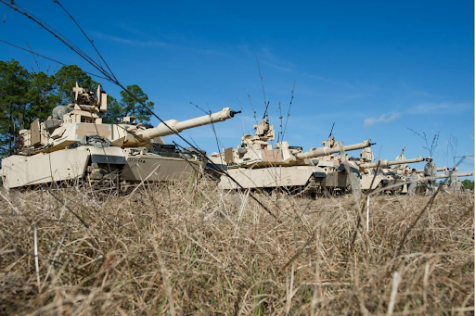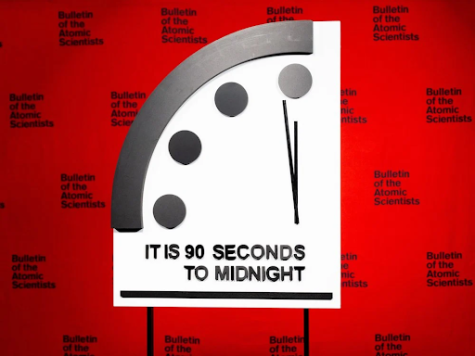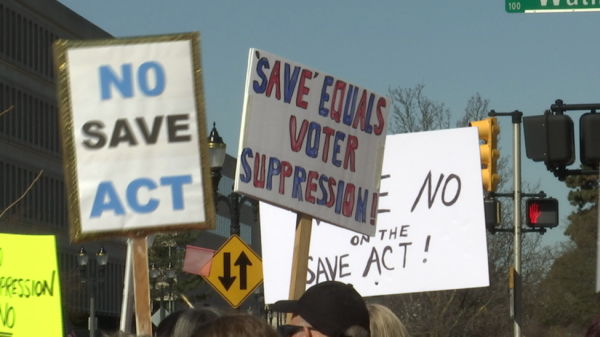Russia-Ukraine War: Fuel to the Fire

Photograph of M1 Abrams Tanks (Military.com)
On February 24th, 2022, Russia launched a surprise invasion against Ukraine under the guise of a “special military operation.” What followed the initial blitzkrieg would be waves of international support for Ukraine, as nations across the globe immediately sanctioned the European superpower and began supplying Ukraine with equipment to defend itself. Nearly a year later, the war still rages on in the eastern country, with no stoppage in the foreseeable future.

Recently, the Kremlin has moved tens of thousands of soldiers to reinforce the Donbas region after several losses in the previous weeks. Albeit Ukrainian soldiers are warding continued Russian assaults, the need for more supplies is still apparent, and Ukrainian Prime Minister Zelensky has made numerous appeals to the international community to secure said resources. After a few weeks of negotiations, the United States and Germany agreed to provide Ukraine with 31 M1 Abrams and 14 Leopard II tanks. In addition to U.S. and German support, Biden has announced that other European allies will provide Ukraine with two tank battalions (62 tanks) to aid in their fight against the Russians (source: AP News). Most of these weapons will arrive just outside Ukraine in relative time (although the U.S. shipment of Abrams will take some time due to stockpile and production issues); however, the next hurdle to cross will be training Ukrainian soldiers to operate the machines on the war front properly. Given the time needed to train numerous tank crews and setbacks in U.S. production effectively, Ukraine won’t be able to field every tank at total capacity until several months into the year.

As a result of the combined support from Europe and the United States, Putin has once again begun his antics, threatening nuclear escalation on the war front. The consensus from the Russian Kremlin views the maneuvers as a direct escalation of the war in Ukraine. Russian ambassador, Sergey Nechayev, referred to the action as an “extremely dangerous decision” (source: CNBC). In recent speeches, Putin referenced the Doomsday Clock following the U.S. and German decisions. The Doomsday Clock is a resource provided by the Bulletin of the Atomic Scientists; it’s used to track the world’s proximity to absolute destruction via nuclear warfare. The clock is currently sitting at 90 seconds to midnight. Should the clock ever reach midnight, it is implied that global armageddon is imminent.
As politicians handle the war from their respective offices, fighting in Ukraine rages on every day. Bakhmut, a city in Central Donbas, is currently under assault by Russian forces. The town was originally under Russian control at the beginning of the war. However, it recently shifted hands due to the Ukrainian offensive, which began last year in the fall of 2022. With the city near the center of Donbas, its geographical importance to both sides of the war effort is hard to ignore. Should Bakhmut remain in Ukrainian hands until the next large offensive, the Ukrainian Army will have a solid staging ground for their liberation movements. However, should Bakhmut and adjacent towns and villages fall, the Ukrainian Army will be forced to retreat and regather their forces for the next campaigns. As of February 1st, 2023, Bakhmut is still within Ukrainian control after thwarting a Russian assault earlier in the day.
Now while the situation in Europe continues to grow and develop each day, it’s always important to reflect on those developments to further understand the outlook of the events.
Dr. Laura Astorian (Social Studies) voices discontent with the delay in the German response to transfer tanks to Ukraine. Despite the delays Dr. Astorian includes an optimistic addition: “I do think that they’ll be helpful, it’s a very expensive thing to send over there. I’m pretty sure that’s something that the U.S. and Germany wouldn’t contribute unless they knew it would be well used.”
Mr. William Rembert (Art) shares whether Putin would escalate the war further and resort to powerful weaponry: “Right now, it doesn’t look like it. It seems like he will ride this out until it’s over. Remember, they were also in Afghanistan just as long as (the United States) were.” For context, Russia (the Soviet Union at the time) invaded Afghanistan in 1979, leading to a war that lasted ten years and a Russian defeat. However, Rembert’s response is a direct contrast to Mrs. Alissa Jean’s (Social Studies) comment: “Absolute power corrupts absolutely, and [Putin] is a dictator; I don’t feel like he has the same standards that we have, so I do believe he will use whatever he has at his disposal.” While their interpretations are different, it does reinforce the idea that nobody in the world can predict Putin’s next move in this situation.
Mr. William Rembert and Mrs. Alissa Jean agrees that our economy would see more strain due to the war. However, Dr. Laura Astorian replies: “I don’t think it’s going to have too much of an economic impact, given how much the egg costs and sending over the weapons costs. The real economic risks stem from how long the war drags on, especially from the agricultural standpoint. Our prices depend on the international market, especially regarding grain, even though we don’t import it.” As of the moment, inflation has yet to impact the U.S. grocery stores as hard as other industries. However, the war’s longevity could eventually result in a shortage of critical agricultural supplies.
All interviewees voice they still support U.S. involvement in the Russia-Ukraine war, expressing how important it is for the international community to get active and involved in pressing matters such as the current. However, they would also like to see a quick resolution to the War in the favor of Ukraine. Dr. Laura Astorian voiced the sentiment: “I just wish the Ukranians all the luck and they keep doing what they are doing, keeping the Russians at bay. Hopefully it ends sooner rather than later and the Russians return to their own country where they belong”.
In conclusion, the recent developments in Ukraine are alarming for the war’s longevity. As neither seems willing to budge or raise the white flag in surrender, the war could very well wrap into next year; however, that is purely dependent on Ukrainian successes in the Donbas over the course of Spring and Summer. As the war continues, it’s also essential to realize its effects on the homefront. Prices of gas, groceries, tools, and more continue to rise steadily as the world’s market and economy adjust to the ever-changing situation in the East. Thus support for each other and Ukraine is imperative in such perilous times.


